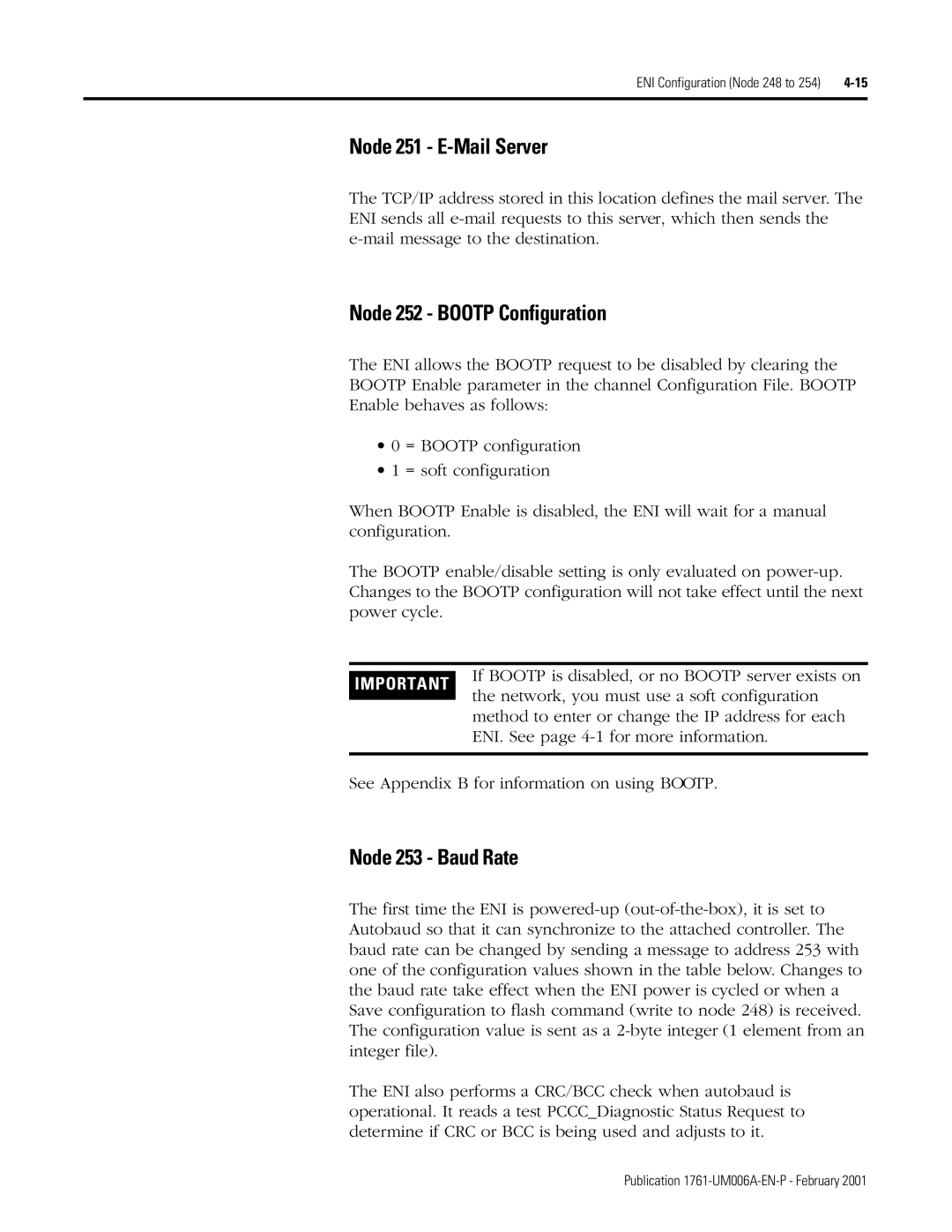
ENI Configuration (Node 248 to 254) | |
|
|
Node 251 - E-Mail Server
The TCP/IP address stored in this location defines the mail server. The ENI sends all
Node 252 - BOOTP Configuration
The ENI allows the BOOTP request to be disabled by clearing the
BOOTP Enable parameter in the channel Configuration File. BOOTP
Enable behaves as follows:
•0 = BOOTP configuration
•1 = soft configuration
When BOOTP Enable is disabled, the ENI will wait for a manual configuration.
The BOOTP enable/disable setting is only evaluated on
IMPORTANT
If BOOTP is disabled, or no BOOTP server exists on the network, you must use a soft configuration method to enter or change the IP address for each ENI. See page
See Appendix B for information on using BOOTP.
Node 253 - Baud Rate
The first time the ENI is
The ENI also performs a CRC/BCC check when autobaud is operational. It reads a test PCCC_Diagnostic Status Request to determine if CRC or BCC is being used and adjusts to it.
Publication
